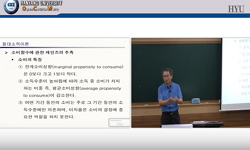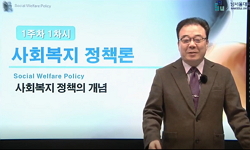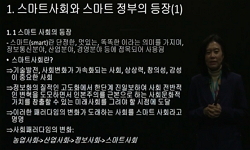In this dissertation, three essays on the heterogeneity of policy determination and economic growth are explored, which implies each chapter is not the same topic. The first essay explored in Chapter 2 presents the surveys on the development of econo...
http://chineseinput.net/에서 pinyin(병음)방식으로 중국어를 변환할 수 있습니다.
변환된 중국어를 복사하여 사용하시면 됩니다.
- 中文 을 입력하시려면 zhongwen을 입력하시고 space를누르시면됩니다.
- 北京 을 입력하시려면 beijing을 입력하시고 space를 누르시면 됩니다.
政策決定의 異質性과 經濟成長에 관한 實證分析 = (An) Empirical Study on the Heterogeneity of Policy Decision and Economic Growth
한글로보기https://www.riss.kr/link?id=T10040843
- 저자
-
발행사항
아산 : 湖西大學校 大學院, 2004
-
학위논문사항
학위논문(박사)-- 호서대학교 대학원: 경제학과 이론경제전공 2005. 2
-
발행연도
2004
-
작성언어
한국어
- 주제어
-
KDC
320.1 판사항(4)
-
발행국(도시)
충청남도
-
형태사항
80p. : 수표 ; 26cm.
-
일반주기명
참고문헌: p. 69-75
- 소장기관
-
0
상세조회 -
0
다운로드
부가정보
다국어 초록 (Multilingual Abstract)
In this dissertation, three essays on the heterogeneity of policy determination and economic growth are explored, which implies each chapter is not the same topic.
The first essay explored in Chapter 2 presents the surveys on the development of economic growth theory and its empirical evidence. Specifically, it consists of the surveys of classical theories, exogenous and endogenous growth theories, and empirical results. The empirics includes two issues, such as growth accounting analysis and growth regression analysis.
In the second essay presented in Chapter 3, an empirical analysis on corruption, natural resources and growth is provided. In reality, it is not difficult to observe the feature that economies with abundant natural resources have tended to grow less rapidly that those with scarce natural resources. The plausible explanations for the observation have been summarized as the literature on 'Dutch disease' and 'rent-seeking.' Based on the existing theoretical arguments, we establish two hypotheses and empirically examine those using cross-country data.
It is found that a country with abundant natural resources (measured as "natural resource exports to GDP in 1971" and fuels, minerals and metals as share of 1978 or 1979 merchandise export") tends to have a higher level of corruption (as a proxy for rent seeking). The possible reason is that a greater amount of natural resources increases the number of entrepreneurs who engage in rent seeking and reduce the number of entrepreneurs who put effort in productive activities. In addition, more natural resources and corruption individually lead to lower economic growth. Hence, abundant natural resources can be an obstacle for economic growth both directly and indirectly through corruption. The results are robust to the inclusion of some explanatory variables and to a sub-sample of developing counties.
The final essay provided in Chapter 4 empirically trace out the impact of initial inequality, measured by income gini index and land gini index close to 1965, on the formation of average tariff rates in 1974-75, 1984-85, 1994-95 using cross-national evidence. It is found that a country's initial inequality is positively and significantly associated with the formation of the average tariff rate. This implies that counties with greater inequalities tend to have more trade protection. Moreover, the results of estimations in this study indicates that the initial asset inequality lowers economic growth rate, even after controlling for some other exploratory variables. However, an indirect effect of initial asset inequality through higher tariff rate on economic growth was not found robust.
Finally, policy implications derived from the analyses in Chapters 3 and 4 are provided in Chapter 5.
목차 (Table of Contents)
- 목차
- I. 서론 = 9
- 1. 연구의 배경 및 목적 = 9
- 2. 연구 방향 및 범위 = 12
- II. 경제성장에 관한 실증연구 = 16
- 목차
- I. 서론 = 9
- 1. 연구의 배경 및 목적 = 9
- 2. 연구 방향 및 범위 = 12
- II. 경제성장에 관한 실증연구 = 16
- 1. 성장회계분석 = 16
- 2. 성장회귀분석 = 18
- III. 천연자원, 렌트추구와 경제성장에 관한 분석 = 22
- 1. 머리말 = 22
- 2. 이론적 배경 및 가설의 설정 = 24
- 3. 실증분석 = 27
- 가. 변수 및 자료 = 27
- 나. 실증분석 모델 = 32
- 다. 실증분석 결과 = 34
- 4. 맺음말 = 42
- IV. 초기의 불평등, 관세설정과 경제성장에 관한 분석 = 44
- 1. 머리말 = 44
- 2. 이론적 배경 = 46
- 3. 통계자료 및 추정방정식 = 49
- 4. 실증분석결과 = 56
- 5. 맺음말 = 64
- V. 결론(정책적 시사점) = 67
- 참고서적 = 69
- 부록 = 76
- ABSTRACT = 78












